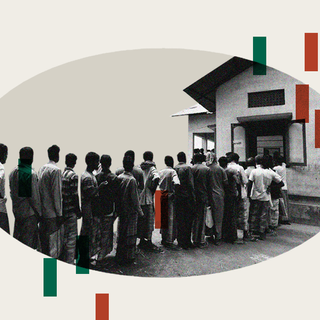Noting that the number of policewomen in India is “abysmally” low, a parliamentary panel recommended at least one all-women police station be set up in each district of India.
Headed by Anand Sharma, a former cabinet minister, the Parliamentary Standing Committee on the Ministry of Home Affairs (MHA) said in its report, “The committee is anguished to note that women are abysmally under-represented in the police force as they constitute only 10.3% of the police force.” This is despite 33% of positions within the police force being reserved for women.
Opening all-woman police stations are not just a tokenistic exercise to have a more balanced gender ratio in the police force. They also serve a very important function in society — that of enabling more complainants to come forward with grievances. According to a study from 2018, opening such stations increased gender-based crime reportage by a significant 22% in India, which was dubbed as “the world’s most dangerous country for women” the same year.
Further, their “abysmally low” numbers, in addition to the patriarchy that’s prevalent in the police force, also led to around 11 female recruits at Kolhapur in Maharashtra being subjected to sexual exploitation by police instructors while they were undergoing training. Subsequent to this, incidents of sexual assault and harassment of female officers by male cops were reported in Jhansi, Uttar Pradesh in 2015, in Bhopal, Madhya Pradesh in 2017, and in Delhi in 2016 when as many 24 policewomen came forward with allegations.
Related on The Swaddle:
All‑Women Police Squads Are Inspiring, But Not the Answer to Women’s Safety
The panel also tries to address the systemic sexism that women who are already part of the country’s police force face. “Women… are mostly given restrictive jobs, limited to making diary entries, addressing crimes against women, or answering calls on 100. Even in all-women police stations, women registering women-related crimes does not mean they are investigating those… They are hardly ever made part of mainstream investigations, with male officers refusing to include them in their teams, citing concerns over vulnerability and lack of physical and mental ability,” Senjuti Chakrabarti, a practising criminal lawyer, had written in The Swaddle in 2020.
In the absence of opportunities to prove their mettle, female officers are barely promoted to higher offices, as a past report from the World Economic Forum had found.
Chakrabarti had interviewed a male officer — an Assistant Commissioner of Police (ACP) — who told her, “You know, it just becomes a burden for me to lead a team with women officers in it. You have to think of her protection all the time, cannot keep her engaged till late in the evening, have to send her home early.”
Unfortunately, considering female officers as subordinates to their male counterparts exists far beyond the belief systems of individual officers, it’s much more systemic. The Jharkhand state police manual, quoted by The Wire, was found to state that female officers “are not to be substituted for male police but they should be employed on duties which they alone could perform more effectively and with greater advantage than male police.”
The Gunjan Saxena-esque sexism — both benevolent and otherwise — reflected in the ACP’s statement and in the police manual, led the panel to recommend the MHA to advise all states and union territories to “give [women] important challenging duties central to the police, and not just duties of inconsequence.”




